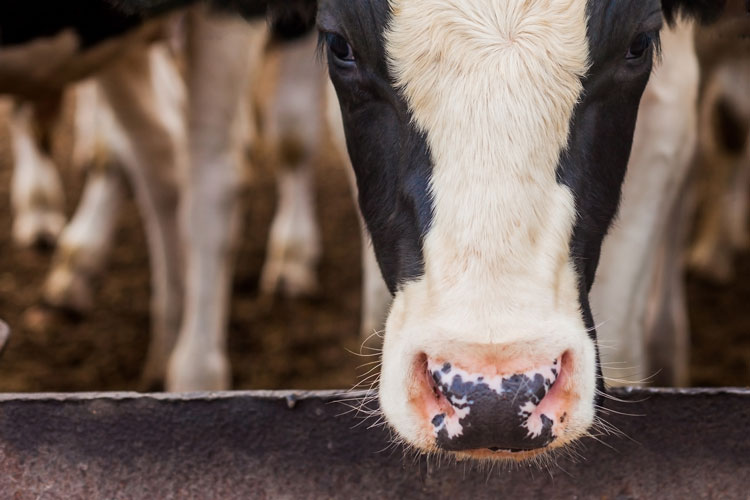
“Beef production from Holstein steers has been a natural by-product or co-product of milk production,” said University of Wisconsin-Madison’s Dan Schaefer during the May Hoard’s Dairyman webinar, “Capturing full value for Holstein and crossbred steers.” He went on to explain today’s targets for finished dairy steers.
“The ideal Holstein steer is the kind of steer that, in the right conditions, both a dairy steer harvester and a native cattle packer would be interested in having,” explained Schafer, an emeritus animal sciences professor. “It’s a steer that has some fullness over its ribs, a little fat accumulation around the tail head, levelness in the flank, and fullness in brisket.”
He added that a more desirable steer would also have a relatively small head for his body, indicating he was a calf-fed, high energy-fed Holstein steer.
Schaefer said that in the Upper Midwest, there are two competing markets for Holstein steers. At JBS, they prefer calf-fed steers up to 1,500 pounds. American Foods Group wants steers that are at least 1,400 pounds.
“The sweet spot for marketing finished Holstein steers is in that range of 1,400 and 1,550 pounds,” Schaefer said. That would translate to a carcass weight of 840 to 930 pounds.
“Of course, the steers need to be appropriately finished,” he added. “Outliers include steers that are incompletely castrated (stags), those fed mostly silage diets, and those that suffered from considerable stress prior to slaughter (dark cutters). These are all reasons for discounts to the Holstein steer value.”
A solid start
Schaefer reminded the audience that Holstein steer production begins with the bull calf.
“We recommend dairy bull calves receive colostrum similar to the program applied to replacement heifer calves,” Schaefer shared. “We don’t have long-standing research on the absence of colostrum in bull calves and the impact on health or performance, but based on what we know in dairy heifer development, the implications of the absence of colostrum are severe.” If buying bull calves, he suggests requiring colostrum feeding as a stipulation for purchase.
He said that castration is also important. “Steers that are not castrated completely are considered stags and suffer steep carcass discounts,” he explained. In addition, he said to dehorn calves to prevent bruising of pen mates.
Schaefer noted that respiratory health can be more of a challenge in dairy bull calves compared to beef calves. This could be partly due to lack of colostrum, a milk replacer diet versus whole milk, and indoor housing. “Dairy steers don’t have the same sort of air quality a beef calf has when it is wandering next to its dam,” he said.
Dairy steer calves should receive a diet high in energy. Schaefer recommended 60 megacalories (Mcal) of net energy for gain (Neg) per hundredweight of dry matter and a crude protein level of 18%. Following weaning, he said dairy calves don’t need much of a grower phase as they have sufficient growth potential. After a short transition period, he said they can be moved on to a finishing diet.
For more information about raising dairy steers, watch the May Hoard’s Dairyman webinar, “Capturing full value for Holstein and crossbred steers." The webinar was sponsored by Neogen.








